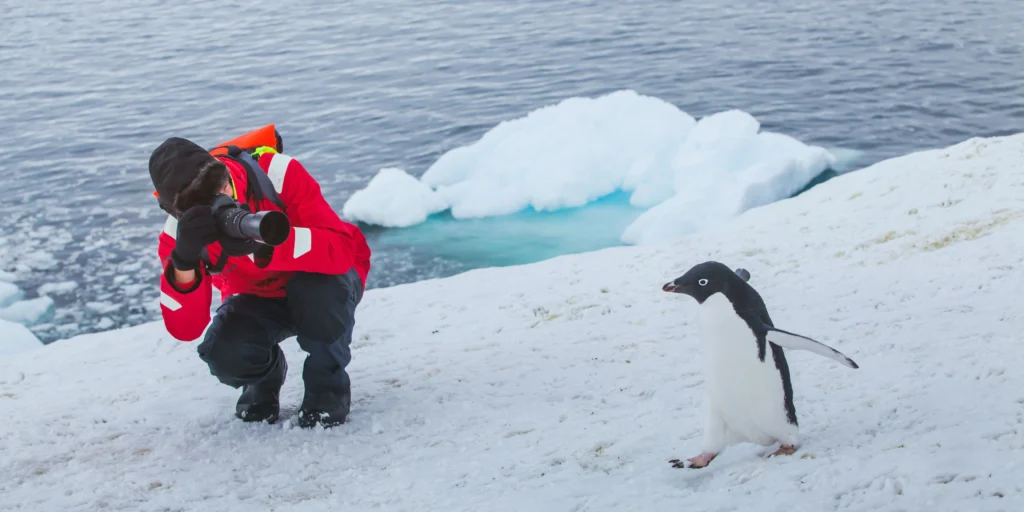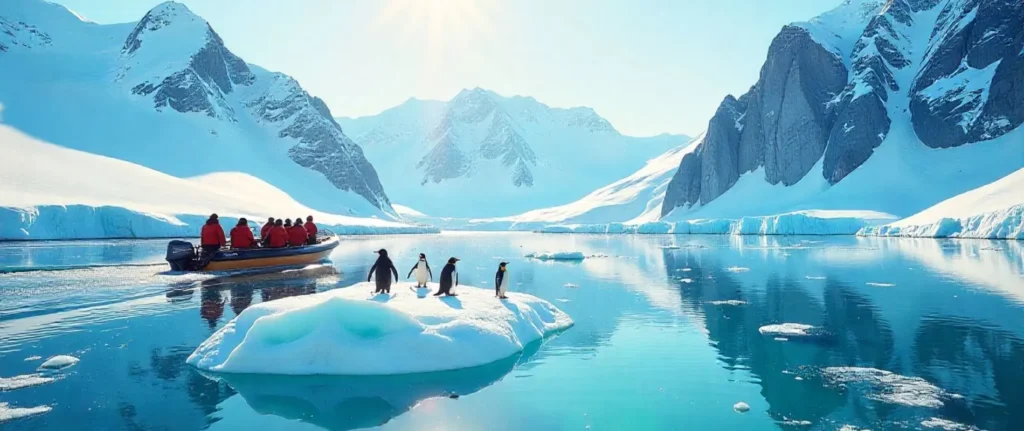
It’s Okay to Take a Little Time Away From Your Child – Don’t Feel Guilty!
It’s Okay to Take a Little Time Away From Your…
Read MoreEmbark on the last great adventure to Antarctica—discover the best time to visit, wildlife, costs, tips, and soul-stirring journeys in the world’s icy wilderness.

There are very few places left on Earth that feel truly untouched. Antarctica is one of them. The icy wilderness at the bottom of the world is the last great adventure—a destination where towering glaciers, endless snowfields, and curious penguins welcome only the boldest travelers. It’s not just a trip. It’s a soul-stirring journey into the uncharted, a story you’ll carry forever.
If you’ve ever dreamed of standing on the edge of the world, this guide will take you there.

No gym needed! Simple body weight moves like squats, push-ups & planks boost strength, energy & flexibility. Start today, stay consistent!
Read More..
ADVERTISEMENT

Antarctica doesn’t have a traditional summer and winter like we’re used to. Instead, its travel window runs from late October to March, the Antarctic summer. This is when the ice breaks enough for ships to pass and when wildlife thrives.
The sweet spot for many adventurers is December through February. Days are longer, temperatures are milder, and the continent feels alive with penguin chicks, playful seals, and breaching whales.
Also Read: Solo Travel Tips for Beginners in 2025
Each part of the season offers something unique.
October – Early November: The continent looks fresh and untouched. Snow is thick, and icebergs shine in their purest white. It’s colder, but photographers love the pristine landscapes.
December – Mid-January: This is peak season. The sun almost never sets, temperatures rise slightly, and penguin colonies are bustling with activity. If you want energy and life, this is your time.
Late January – March: Wildlife watching gets even better as whales are most active. Penguins start molting, and the golden light of late summer creates perfect moments for photography.
Antarctica is not just another destination. It demands preparation, respect, and flexibility. Weather changes fast. Seas can be rough. But with the right mindset and planning, it becomes the greatest adventure of your life.
Big ships may sound comfortable, but they come with restrictions. International rules allow only 100 passengers on land at a time. Smaller expedition ships mean more chances to step onto the ice, explore hidden bays, and connect with nature. Plus, the atmosphere feels intimate—like you’re part of a true expedition team, not just a cruise crowd.
Your choice depends on what you want from the journey. Do you dream of camping overnight on the ice, kayaking beside glaciers, or simply soaking in the views from deck? Research operators carefully. Look for companies part of the IAATO (International Association of Antarctica Tour Operators)—they follow strict rules for safety and environmental care.
Most travelers sail from Ushuaia, Argentina, the southernmost city in the world. The crossing of the Drake Passage is legendary—two days of rolling seas before the icy cliffs of Antarctica appear on the horizon.
For those short on time (or seasick-prone), flights are possible. You can fly from Punta Arenas, Chile, directly to King George Island and join your ship there. It’s faster but more expensive.
This frozen land is alive in ways that will surprise you. Imagine standing among thousands of penguins, each waddling curiously around you. Picture seals stretched on the ice, yawning lazily as the ship drifts by. And then there are the whales—massive, graceful, breaking the surface just meters away. Every moment feels like stepping into a living documentary.
The cold is real, but with the right gear, you’ll stay comfortable. Waterproof outerwear, thermal layers, gloves, hats, and sturdy boots are non-negotiable. Bring sunscreen and sunglasses—the reflection from snow and sea is intense. Seasickness tablets, dry bags for cameras, and personal medications are equally important. Think functional, not fashionable.
The Drake Passage can test even seasoned sailors. Seasickness medication is your best friend. Layering your clothes is key—Antarctica is windy, not just cold. Always carry insurance that covers medical evacuation. Remember, you’re traveling to one of the most remote places on Earth.
Antarctica is fragile. Every step you take matters. IAATO guidelines ensure travelers don’t disturb wildlife or damage ecosystems. Don’t touch animals. Don’t collect rocks or feathers. Don’t leave trash behind. The best way to experience Antarctica is to leave it exactly as you found it—untouched and pure.
Each landing feels like a once-in-a-lifetime moment. Deception Island, with its volcanic caldera, offers hot-spring surprises. Paradise Bay lives up to its name, with mirrored waters reflecting towering icebergs. Activities vary from kayaking among seals to the infamous polar plunge—a heart-racing dive into freezing waters. And yes, some expeditions let you camp under Antarctic skies, with nothing but the sound of cracking ice around you.
This is a photographer’s dream. Wide-angle shots capture endless ice landscapes, while zoom lenses help focus on penguins or breaching whales. Keep batteries close to your body—cold drains them fast. And most importantly, put the camera down sometimes. The best memories are the ones you see with your own eyes.
Antarctica is not just about nature. It’s a hub of scientific discovery. International research stations study climate change, wildlife, and astronomy. It’s also a place of history, where explorers like Shackleton and Amundsen risked their lives chasing the unknown. Standing here, you feel connected not only to nature but to human courage itself.
Good news: Antarctica doesn’t belong to any one country. You don’t need a visa. But you do need to travel with an authorized expedition company, which handles permits under the Antarctic Treaty System. The paperwork is done behind the scenes—you just need your passport and entry visas for Argentina or Chile.
Antarctica isn’t just another trip to tick off your bucket list. It’s a journey that changes you. The silence of the icy wilderness, the thrill of standing on uncharted land, and the humbling presence of wildlife remind you what it means to be alive.
If your heart is calling for adventure, listen. The last great frontier is waiting. Pack your courage, your curiosity, and your sense of wonder. The white continent will do the rest.

It’s Okay to Take a Little Time Away From Your…
Read More
Why Memories Outshine Material Things Have you ever looked at…
Read More
Imagine waking up one morning, looking in the mirror, and…
Read More
How Much Are You Doing to Keep Your Brain Healthy?…
Read More
Want a Healthy Life? Start With These 5 Morning Rituals…
Read More
Have you ever thought about starting a workout routine but…
Read More
Home and Travel: Why You Can’t Cherish One Without the…
Read More
The Difference Between Mind Map and Concept Map Explained Mind…
Read More
It starts with a simple notification. You pick up your…
Read More